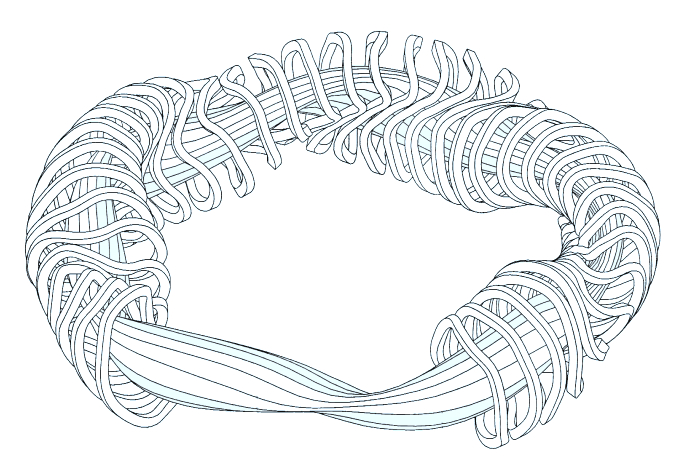
The future of nuclear power might be better than the travelling wave reactor’s less-wasteful fission. If we’re really lucky, we might just get fusion.
***
“Fusion is the power of the future, and it always will be.” That’s the joke, but so far it hasn’t been far off. The ITER tokamak, the most famous attempt to date, has cost billions of dollars, and will cost billions more before it ever generates plasma (let alone fusion) in “2020” (those are skepticism quotation marks, by the way). The National Ignition Facility, which uses the power of 192 laser beams to superheat and compress pellets of fuel to achieve fusion, is behind schedule, too (it’s actually unclear as to whether it will ever produce as much energy as is put into it at this point). But research is continuing, and not just in one direction.
I’ve reported here on other recent developments in the past. Lockheed-Martin’s claims that it’s going to make small-scale fusion a reality in as little as five years, for instance, or the University of Washington’s “dynomak”, and there are at least three startups out there receiving the funding of big names like Paul Allen and Jeff Bezos.
To this we can add another contender, as recently covered by Science Magazine: the Stellarator.
If you want to know the ins and outs of how the Stellarator works, I can’t recommend strongly enough going to read Daniel Clery’s piece, but if you just want a general overview, then stick around and I’ll give you a brief.
Fusion requires great heat and pressure to take place, which is easy to find on the sun, but somewhat less so here on Earth. One of the big problems is that there aren’t a lot of materials on Earth that can withstand those forces. So decades ago scientists came up with the idea of putting the fusion into a magnetic bottle. Because of the way magnetic fields work, the bottle evolved into a more efficient doughnut shape (a torus), which is the shape of the tokamak design that ITER is working on.
Now there were two options at this point. The basic problem is that, if you imagine rings around a doughnut, you’ll notice they’re closer together in the middle. That means the magnetic field strength is going to be stronger on the inside of the doughnut than the outside, which makes the whole thing unstable.
The tokamak solves this problem by inducing a current in the plasma that makes the plasma twist as it circulates, so the bits of plasma on the inside of the doughnut move to the outside and vice versa, like the stripes on a candy cane, but in a circle. This has pros and cons: one the one hand, it allows the plasma to travel in a much smoother bottle, so particles tend not to leak out so much, but on the other hand inducing that twist from within the plasma itself leaves the tokamak open to confinement failure issues called “disruptions.”
The stellarator takes a different approach: instead of making the plasma twist itself, it uses the shape of the confinement magnets themselves to twist the plasma. This solves the problem of disruptions, but it has its own problem: designing those magnets is such a challenge and requires such millimeter-fine precision that even the best models leaked too much plasma to be of much use. Until now.
The Wendelstein 7-X (W7-X) is slated to be “turned on” in November after magnetic testing finished in July. It took 1,100,000 working-hours to assemble. It has over 250 ports for measurement devices and for access to the 450 tonnes of helium-cooled superconducting magnets. It’s so complicated that each ring had to be designed with the help of a supercomputer. And if it works, it might change the follow-on project to ITER, a project called DEMO, from a tokamak to a stellarator.
Because for all the complexity and the extreme challenges in assembly, it bypasses the as-yet unsolved problem of the disruptions with the tokamak.
But here’s the splash of cold water on the awesome party for you: unfortunately, as far as I can tell, the W7-X isn’t designed to actually generate power. It’s a testbed to see if the design can function in a true “steady state” for up to thirty minutes. And given that it’s cost over a billion euros so far and it’s nearly a decade behind schedule, it doesn’t fill me with a great deal of confidence that we’ll be using it to power our cities any time soon.
If you want to see some photos of how crazy looking it is, or if you want to learn more about it, check out Daniel Clery’s piece over at Science Magazine.
Thanks for reading.
***
Richard Ford Burley is a writer and doctoral candidate at Boston College, as well as an editor at Ledger, the first academic journal devoted to Bitcoin and other cryptocurrencies. In his spare time he writes about science, skepticism, feminism, and techno-futurism here at This Week In Tomorrow.

One thought on “Future Power 2: The Stellarator | Vol. 2 / No. 52.3”
Comments are closed.